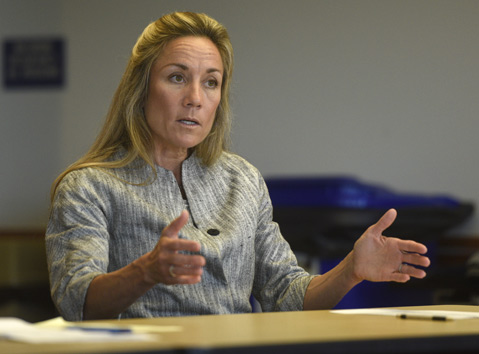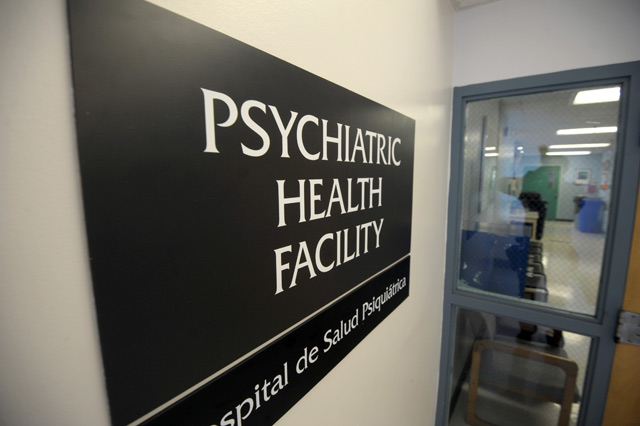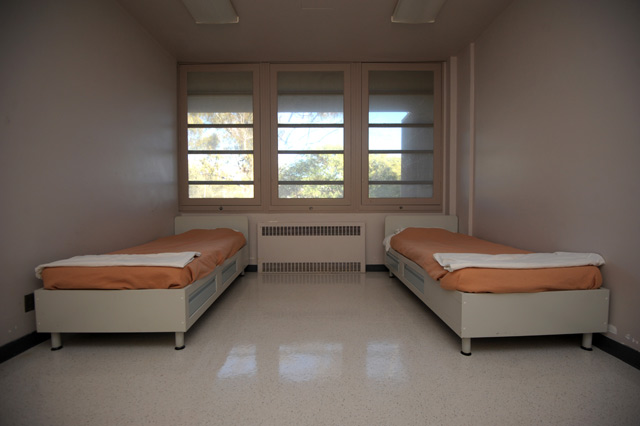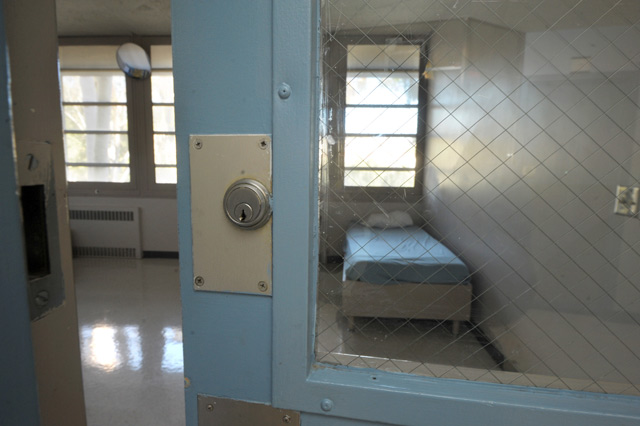Psych Ward Woes
Santa Barbara Doubles Budget to Ship Patients Out of County

Imagine a game of musical chairs in which the number of players increases dramatically, the number of chairs plummets similarly, and the music never stops. That’s pretty much the challenge confronting the county’s chronically undersized lockdown psychiatric hospital.
As a result, hospital administrators are being forced to send more of Santa Barbara’s mentally ill patients to facilities out of the county. To cover the additional costs, the Santa Barbara County supervisors just upped the budget for this service from $2 million a year to $4 million. That increase is also designed to cover a significant drop in reimbursement the county receives for treating patients who are “lucky” enough to get bed space in Santa Barbara’s Psychiatric Health Facility (PHF), better known as the “Puff Unit.”

The reasons for this are manifold and complicated; most of it stems from the fact Santa Barbara has only 16 psychiatric beds in its PHF unit. Its director, Leslie Lundt, has long said the minimal number for a county Santa Barbara’s size is at least 40. For the past three decades, one grand jury after another has concluded the shortage qualifies as a desperate problem. But that’s old news.
What is new are the numbers. In just the past two and a half years, the absolute number of patients sent to out-of-county psychiatric facilities has increased from about 325 to 1,100. The number of bed nights in these facilities jumped to 1,006 in the second quarter of fiscal year 2015-16, up from 414 in the first quarter of fiscal year 2011-12. Curiously, in the same period, the number of patients committed to the county’s PHF actually declined, from about 425 to fewer than 300. The number of bed nights, however, went way up, from 118 to 954.
This shift from in-county to out-of-county treatment has massive fiscal implications. Under the rules of the reimbursement game, Santa Barbara’s Behavioral Wellness Department doesn’t receive a dime for patients sent elsewhere. But even for those treated in the PHF, Behavioral Wellness is now receiving far less in MediCal and Medicare reimbursements than it used to.
One of the biggest factors driving the demand for PHF’s limited bed space is the rise in court-ordered commitments for patients known in the legal jargon as “Incompetent to Stand Trial,” or ISTs for short. These are criminal defendants who may not be able to assist in their own defense. Traditionally, the number of IST bed days has hovered around 100 per quarter. Five years ago, there were no ISTs in the PHF at all. In just the second quarter of last year, county records indicate there were 328 bed stays.

In 2011, officers of the Santa Barbara court expressed doubt about the competency of 153 defendants; 116 of those were found to be incompetent. In 2015, the number more than doubled to 341. The PHF has been the first responder for such patients, evaluating them for competence, rendering determinations, and finally rehabilitating them to the levels legally required to face criminal prosecution.
The highest priority at PHF is supposed to be the acutely mentally ill, some so gravely they pose an immediate threat to themselves or others, a condition known in the vernacular as 5150. The vast majority of IST patients, however, do not qualify as acutely mentally ill. Many IST patients have lengthy criminal histories; some are treatment resistant. Typically PHF administrators would try to find cheaper treatment for these patients, either in step-down programs or in facilities categorized as “Institutions of Mental Disease,” also known as IMDs. Because such patients are frequently difficult, many step-down facilities and IMDs are reluctant to accept them. Beyond that, very few step-down even exist in Santa Barbara, and bed space in IMDs has grown increasingly scarce.
The Incompetent to Stand Trial phenomenon is hardly unique to Santa Barbara; all court systems throughout the state are experiencing a similar uptick. The party line from those living in the crossfire of the mental-health and criminal-justice systems is one of abject mystification. But privately, some mental-health professionals contend the explanation is obvious. With society growing less comfortable about jailing the mentally ill, judges, prosecutors, and defense attorneys are more open to rehabilitative treatment options. Unfortunately, the mental-health infrastructure is overwhelmed, and such alternatives are few and far between.
In response, Behavioral Wellness contracted with private providers to open a new, less-intensive six-bedroom facility in Goleta to help reduce the demand by ISTs for limited bed space. That opened just last November, so it remains too soon to say what impact it’s had.

Another reason there’s increased demand is improved response times to patients experiencing psychiatric meltdowns in the county’s emergency rooms. Not long ago, emergency rooms frequently found themselves forced to hold such patients for many days. “We worked with the Emergency Departments to decrease lengths of stay while in emergency rooms, which means more people are getting to psych hospitals quicker instead of sitting in the emergency room for as long as three days,” explained Suzanne Grimmesey, chief quality care officer for Behavioral Wellness. What’s good for the emergency rooms, however, increases the burden on the county PHF.
Yet another big problem is that the patients now disproportionately occupying PHF beds are designated as “administrative” patients rather than “acute” patients. That’s a big deal because PHF gets paid $2,000 by MediCal a night to treat acute patients. For the administrative caseload, it’s almost $700 a night. Five years ago, a small fraction of the PHF caseload was categorized as “admin.” Today, it’s two-thirds. Before 2006, some of these could have been referred to Cottage Hospital for treatment in its psych wing, but that year MediCal payments for such patients dropped lower than Cottage deemed economically acceptable. That’s when the hospital stopped accepting county clients. It continues to admit voluntary county patients with Medicare. Involuntary admissions ended at Cottage in 2002 due to challenges with on-call physician coverage and the time-intensive court hearings doctors were required to attend, said spokesperson Maria Zate.
County mental-health administrators have sought space for “admin” patients in IMDs. In Santa Barbara, there are not a lot of options, and bed space in IMDs is getting harder to find. This past year, administrators had hoped to open four new facilities with 28 beds, offering a range of care. One opened in November, another in January, offering a total of 14 new beds. Part of the problem is a shortage of state licensing inspectors. County administrators complain of delays up to four months to get a licensing inspector on the premises.
In the meantime, Behavioral Wellness administrators are hoping their new triage program can help stem the flow of new patients into the county’s PHF unit. Part of the program includes a new eight-chair crisis stabilization unit, where, for up to 23 hours, those in extreme distress can get treatment, the necessary referrals, and ideally some relief. Likewise, there’s a crisis residential unit, which offers six beds. And lastly, there are the three “crisis” teams dispatched countywide. The strategy is to find patients in need before they need the PHF. This program, likewise, is still too new to assess its effectiveness. In the meantime, Santa Barbara’s game of musical chairs with its mentally ill just got $2 million more expensive.



